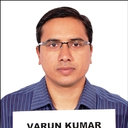Threshold levels of 25-hydroxyvitamin D and parathyroid hormone for impaired bone health in children with congenital ichthyosis and type IV and V skin.
Palabras clave
Abstracto
BACKGROUND
Patients with congenital ichthyosis, especially those with darker skin types, are at increased risk of developing vitamin D deficiency and rickets. The relationships between 25-hydroxyvitamin D [25(OH)D], parathyroid hormone (PTH) and bone health have not been studied previously, in ichthyosis.
OBJECTIVE
To determine the threshold levels of 25(OH)D and PTH for impaired bone health in children with congenital ichthyosis.
METHODS
In this cross-sectional study, 119 children with ichthyosis and 168 controls were recruited. Serum 25(OH)D, PTH, calcium, phosphate and alkaline phosphatase (ALP) were measured. Radiological screening for rickets was carried out only in children with ichthyosis.
RESULTS
Forty-seven children with ichthyosis had either clinical or radiological evidence of rickets. The correlation between serum 25(OH)D and PTH showed that a serum level of 25(OH)D 8 ng mL(-1) was associated with a significant increase in PTH. The correlation between PTH and ALP showed that a serum PTH level of 75 pg mL(-1) was associated with a significant increase in ALP levels. Of the different clinical phenotypes of ichthyosis, both autosomal recessive congenital ichthyosis (ARCI) and epidermolytic ichthyosis (EI) were found to have significantly increased PTH, ALP and radiological rickets scores compared with common ichthyosis.
CONCLUSIONS
Serum levels of 25(OH)D ≤ 8 ng mL(-1) and PTH ≥ 75 pg mL(-1) significantly increases the risk for development of rickets [odds ratio (OR) 2·8; 95% confidence interval (CI) 1·05-7·40; P = 0·04] in ichthyosis. Among the different types, patients with ARCI (OR 4·83; 95% CI 1·74-13·45; P < 0·01) and EI (OR 5·71; 95% CI 1·74-18·79; P < 0·01) are at an increased risk of developing rickets.



